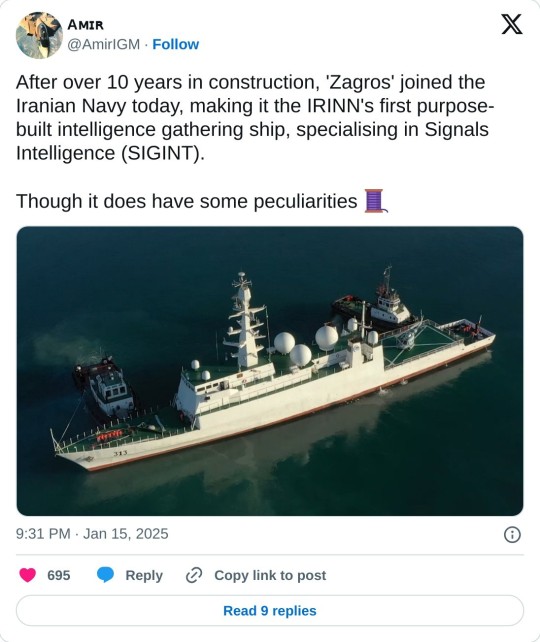#sensor-integration
Explore tagged Tumblr posts
Link
#adaptivemanufacturing#datamanagement#hardware-verification#industrialIoT#memorytechnology#regionalinnovation#sensor-integration#smartcityinfrastructure
0 notes
Text

Radiographic imaging map (profile of a human patient) rendered using local data collected with ‘body sensors’
* * * *
in motion
Forms within the universe, whether galaxies, human beings or trees, are generated as an expression of vast forces at work within a holistic framework. Separateness, fragmentation, and disconnection are all illusions … Wholeness is never lost, and the Health within the human system, which is a manifestation of this unity, is also never lost.“
-John Upledger
#John Upledger#quotes#in motion#wholeness#Radiographic imagine map#body sensors#fragmentation#Body Alive#Structural Integration Atlanta
7 notes
·
View notes
Text
Exploring the Benefits of Smart Home Temperature and Humidity Sensors with SwitchBot
Hello everyone! I'm excited to join this community and discuss the innovative world of smart home technology. Specifically, I've been exploring SwitchBot's incredible temperature and humidity sensors, and I must say, they are truly impressive!
SwitchBot's sensors not only help in maintaining a comfortable living environment, but they also provide valuable insights into your home's climate. By tracking the temperature and humidity levels, you can make informed decisions about your heating, cooling, and ventilation systems, ensuring optimal comfort for you and your family.
One of the best features is the ability to receive real-time alerts on your smartphone. This means you can monitor your home's conditions even when you're away, giving you peace of mind. Plus, the sensors are easy to set up and integrate seamlessly with other smart home devices.
Have any of you tried the SwitchBot temperature and humidity sensor? I would love to hear your experiences and any tips you might have for maximizing its benefits!
#comfortable living#smart home#smartphone integration#home monitoring#humidity sensors#home automation#real-time alerts
0 notes
Text
Living Intelligence: The Fusion of AI, Biotechnology, and Sensors

How AI, Biotechnology, and Sensors Create Adaptive Living Systems
Introduction: A New Frontier in Living Intelligence Technology
In today’s era of rapid technological breakthroughs, the convergence of artificial intelligence (AI), biotechnology, and advanced sensor technology is giving rise to an extraordinary new paradigm known as Living Intelligence. This innovative fusion blurs the lines between biological systems and machines, creating adaptive, self-regulating systems that exhibit characteristics of living organisms.
Living intelligence systems have the potential to transform numerous fields from health monitoring and personalized medicine to environmental sensing and smart cities. By mimicking natural processes such as learning, adaptation, and self-healing, these technologies open doors to solutions that were previously unimaginable.
As this field evolves, it is poised to revolutionize how humans interact with technology, enabling smarter ecosystems that respond dynamically to their environment. For those interested in exploring the cutting edge of science and technology, living intelligence represents a thrilling frontier with vast potential.
To learn more about the intersection of biology and AI, explore research initiatives at the MIT Media Lab.
Understanding Living Intelligence: The Fusion of AI, Biotechnology, and Sensors
Living intelligence represents a cutting-edge integration of artificial intelligence (AI), biotechnology, and advanced sensor technologies to create dynamic, responsive systems capable of perceiving, learning, and adapting in real time. Unlike traditional machines or static software programs, living intelligence systems embody characteristics commonly found in biological organisms including self-organization, evolutionary adaptation, and environmental responsiveness.
At the heart of living intelligence lies a powerful synergy between three core components:
AI’s data processing and machine learning capabilities: These enable the system to analyze vast amounts of data, identify patterns, and make informed decisions autonomously.
Biotechnology’s expertise in biological processes: This allows for the manipulation and integration of living cells or biomaterials into technological systems, enabling functionalities such as self-repair and growth.
Advanced sensor technology: High-precision sensors collect real-time data from the environment or living organisms, feeding information continuously to AI algorithms for rapid response.
This triad facilitates a seamless flow of information between biological and artificial elements, resulting in adaptive, efficient, and often autonomous systems that can operate in complex, dynamic environments. These systems have promising applications across healthcare, environmental monitoring, robotics, and beyond.
For an in-depth look at how living intelligence is shaping future technologies, check out this insightful overview from Nature Biotechnology.
The Role of AI in Living Intelligence: The Cognitive Engine of Adaptive Systems
Artificial Intelligence (AI) serves as the cognitive engine powering living intelligence systems. Leveraging advances in deep learning, neural networks, and machine learning algorithms, AI excels at pattern recognition, predictive analytics, and complex decision-making. When combined with biological inputs and continuous sensor data streams, AI can decode intricate biological signals and convert them into meaningful, actionable insights.
For instance, in healthcare technology, AI algorithms analyze data from wearable biosensors that track vital signs such as heart rate variability, glucose levels, or brain activity. This enables early detection of illnesses, stress markers, or other physiological changes, empowering proactive health management and personalized medicine.
In the field of precision agriculture, AI integrated with biosensors can monitor plant health at a molecular or cellular level, optimizing irrigation, nutrient delivery, and pest control to enhance crop yield while minimizing resource use promoting sustainable farming practices.
Beyond analysis, AI also drives continuous learning and adaptive behavior in living intelligence systems. These systems evolve in response to new environmental conditions and feedback, improving their performance autonomously over time mirroring the self-improving nature of living organisms.
For more on how AI transforms living intelligence and bio-integrated systems, explore resources from MIT Technology Review’s AI section.
Biotechnology: Bridging the Biological and Digital Worlds in Living Intelligence
Biotechnology serves as the critical bridge between biological systems and digital technologies, providing the tools and scientific understanding necessary to interface with living organisms at the molecular and cellular levels. Recent breakthroughs in synthetic biology, gene editing technologies like CRISPR-Cas9, and advanced bioengineering have unlocked unprecedented opportunities to design and manipulate biological components that seamlessly communicate with AI systems and sensor networks.
A particularly exciting frontier is the emergence of biohybrid systems, innovative integrations of living cells or tissues with electronic circuits and robotic platforms. These biohybrids can perform sophisticated functions such as environmental sensing, biomedical diagnostics, and targeted drug delivery. For example, engineered bacteria equipped with nanoscale biosensors can detect pollutants or toxins in water sources and transmit real-time data through AI-driven networks. This capability facilitates rapid, precise environmental remediation and monitoring, crucial for addressing global ecological challenges.
Moreover, biotechnology enables the creation of advanced biosensors, which utilize biological molecules to detect a wide range of chemical, physical, and even emotional signals. These devices can continuously monitor critical health biomarkers, identify pathogens, and assess physiological states by analyzing hormone levels or other biochemical markers. The rich data collected by biosensors feed directly into AI algorithms, enhancing the ability to provide personalized healthcare, early disease detection, and adaptive treatment strategies.
For a deeper dive into how biotechnology is revolutionizing living intelligence and healthcare, check out the latest updates at the National Institutes of Health (NIH) Biotechnology Resources.
Sensors: The Eyes and Ears of Living Intelligence
Sensors play a pivotal role as the critical interface between biological systems and artificial intelligence, acting as the “eyes and ears” that capture detailed, real-time information about both the environment and internal biological states. Recent advances in sensor technology have led to the development of miniaturized, highly sensitive devices capable of detecting an extensive range of physical, chemical, and biological signals with exceptional accuracy and speed.
In the realm of healthcare, wearable sensors have revolutionized personalized medicine by continuously tracking vital signs such as heart rate, blood oxygen levels, body temperature, and even biochemical markers like glucose or hormone levels. This continuous data stream enables proactive health monitoring and early disease detection, improving patient outcomes and reducing hospital visits.
Environmental sensors also play a crucial role in living intelligence systems. These devices monitor parameters such as air quality, soil moisture, temperature, and pollutant levels, providing vital data for environmental conservation and sustainable agriculture. By integrating sensor data with AI analytics, stakeholders can make informed decisions that protect ecosystems and optimize resource management.
What sets sensors in living intelligence apart is their ability to participate in real-time feedback loops. Instead of merely collecting data, these sensors work in tandem with AI algorithms to create autonomous systems that dynamically respond to changes. For example, in smart agricultural setups, sensors detecting dry soil can trigger AI-driven irrigation systems to activate precisely when needed, conserving water and maximizing crop yield. Similarly, in healthcare, sensor data can prompt AI systems to adjust medication dosages or alert medical professionals to potential emergencies immediately.
Together, these advanced sensors and AI create living intelligence systems capable of self-regulation, adaptation, and continuous learning bringing us closer to a future where technology and biology co-evolve harmoniously.
For more insights into cutting-edge sensor technologies, explore the resources provided by the IEEE Sensors Council.
Applications and Impact of Living Intelligence
The convergence of artificial intelligence (AI), biotechnology, and advanced sensor technology in living intelligence is already revolutionizing a wide array of industries. This innovative fusion is driving transformative change by enabling smarter, adaptive systems that closely mimic biological processes and enhance human capabilities.
Healthcare: Personalized and Predictive Medicine
Living intelligence is accelerating the shift toward personalized medicine, where treatments are tailored to individual patients’ unique biological profiles. Implantable biosensors combined with AI algorithms continuously monitor vital health metrics and biochemical markers, enabling early detection of diseases such as diabetes, cardiovascular conditions, and even cancer. These systems facilitate real-time medication adjustments and proactive management of chronic illnesses, reducing hospital visits and improving quality of life. For example, AI-powered glucose monitors can automatically regulate insulin delivery, empowering diabetic patients with better control. Learn more about AI in healthcare at NIH’s Artificial Intelligence in Medicine.
Environmental Management: Smart and Sustainable Ecosystems
Living intelligence is reshaping environmental monitoring and management by creating smart ecosystems. Biosensors deployed in natural habitats detect pollutants, chemical changes, and climate variations, feeding real-time data to AI models that analyze trends and predict ecological risks. Automated bioremediation systems and adaptive irrigation solutions respond dynamically to environmental cues, enhancing sustainability and reducing human intervention. This approach helps combat pollution, conserve water, and protect biodiversity in an increasingly fragile environment. Discover innovations in environmental sensing at the Environmental Protection Agency (EPA).
Agriculture: Precision Farming and Resource Optimization
Precision agriculture leverages living intelligence to maximize crop yields while minimizing environmental impact. By integrating soil biosensors, climate data, and AI-driven analytics, farmers can optimize water usage, fertilization, and pest control with pinpoint accuracy. This results in healthier crops, reduced chemical runoff, and more efficient use of natural resources. For instance, AI-powered drones equipped with sensors monitor plant health at the molecular level, allowing targeted interventions that save costs and boost productivity. Explore advancements in smart farming at FAO - Precision Agriculture.
Wearable Technology: Beyond Fitness Tracking
Wearable devices enhanced by living intelligence go far beyond step counting and heart rate monitoring. These advanced wearables assess mental health indicators, stress responses, and neurological conditions through continuous biometric sensing and AI analysis. This opens new frontiers in early diagnosis, personalized therapy, and wellness optimization. For example, AI-driven wearables can detect signs of anxiety or depression by analyzing hormone fluctuations and physiological patterns, enabling timely interventions. Check out the latest in wearable health tech from Wearable Technologies.
Robotics and Biohybrids: Adaptive and Responsive Machines
Living intelligence is paving the way for biohybrid robots machines integrated with living cells or bioengineered tissues. These robots combine the flexibility and self-healing properties of biological material with the precision of robotics, enabling them to perform delicate medical procedures, intricate manufacturing tasks, or exploration in unpredictable environments. Such systems adapt dynamically to changes, enhancing efficiency and safety in sectors like surgery, pharmaceuticals, and space missions. Learn about biohybrid robotics at MIT’s Biohybrid Robotics Lab.
Ethical and Social Considerations in Living Intelligence
As living intelligence technologies increasingly merge biological systems with artificial intelligence and sensor networks, they raise profound ethical and social questions that demand careful reflection. This emerging frontier blurs the boundaries between living organisms and machines, requiring a responsible approach to development and deployment.
Manipulation of Biological Materials
Advances in synthetic biology, gene editing (such as CRISPR), and biohybrid systems enable unprecedented manipulation of living cells and tissues. While these innovations hold tremendous promise, they also provoke concerns about unintended consequences, such as ecological disruption or irreversible genetic changes. Ethical frameworks must guide the use of biotechnology to prevent misuse and ensure safety. Learn about gene editing ethics from the National Human Genome Research Institute.
Data Privacy and Genetic Information Security
Living intelligence systems often rely on vast amounts of biometric data and genetic information, raising critical questions about data privacy and consent. Protecting sensitive health data from breaches or misuse is paramount, especially as AI-driven analytics become more powerful. Regulatory compliance with standards like HIPAA and GDPR is essential, alongside transparent data governance policies. Public trust hinges on safeguarding individual rights while enabling technological progress. Explore data privacy regulations at the European Data Protection Board.
Environmental and Ecological Impact
The integration of living intelligence into ecosystems carries risks of ecological imbalance. Introducing engineered organisms or biohybrid devices into natural environments may have unpredictable effects on biodiversity and ecosystem health. Continuous environmental monitoring and impact assessments are necessary to mitigate potential harm and ensure sustainability. See more on ecological risk management at the United Nations Environment Programme.
Transparency, Regulation, and Public Engagement
Responsible innovation in living intelligence requires transparent communication about the technology’s capabilities, risks, and benefits. Governments, industry stakeholders, and researchers must collaborate to establish clear regulatory frameworks that promote ethical standards and accountability. Equally important is engaging the public in meaningful dialogue to address societal concerns, build trust, and guide policymaking. For insights into ethical AI governance, visit the AI Ethics Guidelines by OECD.
By proactively addressing these ethical and social dimensions, society can harness the transformative power of living intelligence while safeguarding human dignity, privacy, and the environment. This balanced approach is essential for building a future where technology and biology coexist harmoniously and ethically.
The Road Ahead: Toward a Symbiotic Future
Living intelligence opens the door to a symbiotic future where humans, machines, and biological systems do more than just coexist; they collaborate seamlessly to address some of the world’s most pressing challenges. This emerging paradigm holds the promise of revolutionizing fields such as personalized healthcare, by enabling continuous health monitoring and adaptive treatments tailored to individual needs. It also paves the way for environmental resilience, with biohybrid sensors and AI-driven ecosystems working in tandem to monitor and protect our planet in real time.
Innovative applications will extend into agriculture, smart cities, and robotics, creating technologies that not only perform tasks but also learn, evolve, and respond to their environments autonomously. However, realizing this transformative potential hinges on sustained interdisciplinary research, development of robust ethical guidelines, and ensuring equitable access to these advanced technologies across communities and countries.
As AI, biotechnology, and sensor technologies become ever more intertwined, living intelligence will redefine how we interact with the natural and digital worlds, unlocking new potentials that once belonged only in the realm of science fiction.
Conclusion: Embracing the Future of Living Intelligence
The fusion of artificial intelligence, biotechnology, and sensor technologies marks the beginning of an exciting new era, one where the boundaries between living organisms and machines blur to create intelligent, adaptive systems. Living intelligence promises to improve healthcare, enhance environmental stewardship, and drive technological innovation that benefits all of humanity.
To navigate this future responsibly, it is essential to balance innovation with ethical considerations, transparency, and collaboration among researchers, policymakers, and society at large. By doing so, we can ensure that living intelligence becomes a force for good, empowering individuals and communities worldwide.
Stay Ahead with Entrepreneurial Era Magazine
Curious to explore more about groundbreaking technologies, emerging trends, and strategies shaping the future of business and innovation? Subscribe to Entrepreneurial Era Magazine today and get exclusive insights, expert interviews, and actionable advice tailored for entrepreneurs and innovators like you.
Join thousands of forward-thinking readers who are already leveraging the latest knowledge to grow their ventures and stay competitive in a rapidly evolving world.
Subscribe now and be part of the innovation revolution!
Subscribe to Entrepreneurial Era Magazine
FAQs
What is Living Intelligence in technology? Living Intelligence refers to systems where artificial intelligence (AI), biotechnology, and sensors merge to create responsive, adaptive, and autonomous environments. These systems behave almost like living organisms collecting biological data, analyzing it in real-time, and making decisions or adjustments without human input. Examples include smart implants that adjust medication doses, bio-hybrid robots that respond to environmental stimuli, or AI-driven ecosystems monitoring human health. The goal is to mimic natural intelligence using technology that senses, thinks, and evolves enabling next-generation applications in healthcare, agriculture, environmental science, and more.
How do AI, biotechnology, and sensors work together in Living Intelligence? In Living Intelligence, sensors collect biological or environmental data (like heart rate, chemical levels, or temperature). This data is sent to AI algorithms that analyze it instantly, recognizing patterns or abnormalities. Biotechnology then acts on these insights, often in the form of engineered biological systems, implants, or drug delivery systems. For example, a biosensor may detect dehydration, the AI recommended fluid intake, and a biotech implant responds accordingly. This fusion enables systems to adapt, learn, and respond in ways that closely resemble living organisms bringing a dynamic edge to digital health and bioengineering.
What are real-world examples of Living Intelligence? Examples include smart insulin pumps that monitor blood glucose and adjust doses automatically, AI-enhanced prosthetics that respond to muscle signals, and biosensors embedded in clothing to track health metrics. In agriculture, Living Intelligence powers systems that detect soil nutrient levels and deploy micro-doses of fertilizer. In environmental monitoring, bio-sensing drones track pollution levels and AI predicts ecological shifts. These innovations blur the line between machine and organism, offering intelligent, autonomous responses to biological or environmental conditions often improving speed, precision, and personalization in critical fields.
What role does biotechnology play in Living Intelligence? Biotechnology serves as the biological interface in Living Intelligence. It enables machines and sensors to interact with living tissues, cells, and molecules. From genetically engineered cells that react to pollutants to biocompatible implants that communicate with neural pathways, biotechnology helps translate biological signals into data AI can process and vice versa. This allows for precision treatments, early disease detection, and real-time bodily monitoring. In essence, biotechnology enables machines to "speak the language" of life, forming the bridge between human biology and machine intelligence.
Are Living Intelligence systems safe for human use? When properly developed, Living Intelligence systems can be safe and even enhance health and safety. Regulatory oversight, clinical testing, and ethical review are essential before human deployment. Implants or biotech sensors must be biocompatible, AI must avoid bias or misinterpretation, and data must be securely encrypted. Most systems are designed with safety protocols like auto-shutdown, alert escalation, or user override. However, because these technologies are still evolving, long-term effects and ethical considerations (like autonomy, data privacy, and human enhancement) continue to be actively explored.
How is Living Intelligence transforming healthcare? Living Intelligence is revolutionizing healthcare by making it predictive, personalized, and proactive. Wearable biosensors track vitals in real time, AI analyzes this data to detect early signs of illness, and biotech systems deliver treatments exactly when and where needed. This reduces hospital visits, speeds up diagnosis, and enables preventative care. For example, cancer detection can happen earlier through bio-integrated diagnostics, while chronic illnesses like diabetes or heart disease can be managed more effectively with adaptive, AI-guided interventions. The result: longer lifespans, better quality of life, and lower healthcare costs.
Can Living Intelligence be used outside of healthcare? Yes, Living Intelligence extends far beyond healthcare. In agriculture, it enables smart farming with biosensors that detect soil health and AI that regulates water or nutrient delivery. In environmental science, it’s used in biohybrid sensors to monitor air or water pollution. In wearable tech, it powers personalized fitness and stress management tools. Even in space exploration, researchers are exploring AI-biotech hybrids for autonomous life support. Wherever biology meets decision-making, Living Intelligence can optimize systems by mimicking the adaptability and efficiency of living organisms.
How do biosensors contribute to Living Intelligence? Biosensors are the input channels for Living Intelligence. These tiny devices detect biological signals such as glucose levels, hormone changes, or toxins and convert them into digital data. Advanced biosensors can operate inside the body or in wearable devices, often transmitting data continuously. AI then interprets these signals, and biotech components act accordingly (e.g., drug release, alerting doctors, or environmental controls). Biosensors allow for non-invasive, real-time monitoring and make it possible for machines to understand and react to living systems with remarkable precision.
What are the ethical concerns surrounding Living Intelligence? Key ethical concerns include data privacy, human autonomy, and biological manipulation. When AI monitors health or biology, who owns the data? Can systems make decisions that override human will like stopping medication or triggering an alert? Additionally, biotech integration raises concerns about altering natural biology or creating bioengineered entities. Transparency, informed consent, and regulation are vital to ensure these technologies serve humanity without exploitation. As Living Intelligence evolves, policymakers and technologists must collaborate to align innovation with ethical standards.
What does the future hold for Living Intelligence? The future of Living Intelligence is incredibly promising. We’ll likely see cyborg-like medical devices, fully autonomous bio-monitoring ecosystems, and AI-driven drug synthesis tailored to your DNA. Smart cities may use biosensors in public spaces to track environmental health. Even brain-computer interfaces could become more common, powered by AI and biological sensors. Over time, machines won’t just compute, they'll sense, adapt, and evolve, making technology indistinguishable from life itself. The challenge ahead is not just building these systems but ensuring they remain ethical, secure, and beneficial for all.
#living intelligence technology#AI and biotechnology fusion#sensor-driven intelligent systems#biotechnology in AI systems#adaptive AI sensors#smart biosensor technology#AI-powered bioengineering#living systems AI integration#real-time biological sensing#intelligent biohybrid devices
0 notes
Text
The AIoT Revolution: How AI and IoT Convergence is Rewriting the Rules of Industry & Life

Imagine a world where factory machines predict their own breakdowns before they happen. Where city streets dynamically adjust traffic flow in real-time, slashing commute times. Where your morning coffee brews automatically as your smartwatch detects you waking. This isn’t science fiction—it’s the explosive reality of Artificial Intelligence of Things (AIoT), the merger of AI algorithms and IoT ecosystems. At widedevsolution.com, we engineer these intelligent futures daily.
Why AIoT Isn’t Just Buzzword Bingo: The Core Convergence
Artificial Intelligence of Things fuses the sensory nervous system of IoT devices (sensors, actuators, smart gadgets) with the cognitive brainpower of machine learning models and deep neural networks. Unlike traditional IoT—which drowns in raw data—AIoT delivers actionable intelligence.
As Sundar Pichai, CEO of Google, asserts:
“We are moving from a mobile-first to an AI-first world. The ability to apply AI and machine learning to massive datasets from connected devices is unlocking unprecedented solutions.”
The AIoT Trinity: Trends Reshaping Reality
1. Predictive Maintenance: The Death of Downtime Gone are days of scheduled check-ups. AI-driven predictive maintenance analyzes sensor data intelligence—vibrations, temperature, sound patterns—to forecast failures weeks in advance.
Real-world impact: Siemens reduced turbine failures by 30% using AI anomaly detection on industrial IoT applications.
Financial upside: McKinsey estimates predictive maintenance cuts costs by 20% and downtime by 50%.
2. Smart Cities: Urban Landscapes with a Brain Smart city solutions leverage edge computing and real-time analytics to optimize resources. Barcelona’s AIoT-powered streetlights cut energy use by 30%. Singapore uses AI traffic prediction to reduce congestion by 15%.
Core Tech Stack:
Distributed sensor networks monitoring air/water quality
Computer vision systems for public safety
AI-powered energy grids balancing supply/demand
3. Hyper-Personalized Experiences: The End of One-Size-Fits-All Personalized user experiences now anticipate needs. Think:
Retail: Nike’s IoT-enabled stores suggest shoes based on past purchases and gait analysis.
Healthcare: Remote patient monitoring with wearable IoT detects arrhythmias before symptoms appear.
Sectoral Shockwaves: Where AIoT is Moving the Needle
🏥 Healthcare: From Treatment to Prevention Healthcare IoT enables continuous monitoring. AI-driven diagnostics analyze data from pacemakers, glucose monitors, and smart inhalers. Results?
45% fewer hospital readmissions (Mayo Clinic study)
Early detection of sepsis 6+ hours faster (Johns Hopkins AIoT model)
🌾 Agriculture: Precision Farming at Scale Precision agriculture uses soil moisture sensors, drone imagery, and ML yield prediction to boost output sustainably.
Case Study: John Deere’s AIoT tractors reduced water usage by 40% while increasing crop yields by 15% via real-time field analytics.
🏭 Manufacturing: The Zero-Waste Factory Manufacturing efficiency soars with AI-powered quality control and autonomous supply chains.
Data Point: Bosch’s AIoT factories achieve 99.9985% quality compliance and 25% faster production cycles through automated defect detection.
Navigating the Minefield: Challenges in Scaling AIoT
Even pioneers face hurdles:ChallengeSolutionData security in IoTEnd-to-end encryption + zero-trust architectureSystem interoperabilityAPI-first integration frameworksAI model driftContinuous MLOps monitoringEnergy constraintsTinyML algorithms for low-power devices
As Microsoft CEO Satya Nadella warns:
“Trust is the currency of the AIoT era. Without robust security and ethical governance, even the most brilliant systems will fail.”
How widedevsolution.com Engineers Tomorrow’s AIoT
At widedevsolution.com, we build scalable IoT systems that turn data deluge into profit. Our recent projects include:
A predictive maintenance platform for wind farms, cutting turbine repair costs by $2M/year.
An AI retail personalization engine boosting client sales conversions by 34%.
Smart city infrastructure reducing municipal energy waste by 28%.
We specialize in overcoming edge computing bottlenecks and designing cyber-physical systems with military-grade data security in IoT.
The Road Ahead: Your AIoT Action Plan
The AIoT market will hit $1.2T by 2030 (Statista). To lead, not follow:
Start small: Pilot sensor-driven process optimization in one workflow.
Prioritize security: Implement hardware-level encryption from day one.
Democratize data: Use low-code AI platforms to empower non-technical teams.
The Final Byte We stand at an inflection point. Artificial Intelligence of Things isn’t merely connecting devices—it’s weaving an intelligent fabric across our physical reality. From farms that whisper their needs to algorithms, to factories that self-heal, to cities that breathe efficiently, AIoT transforms data into wisdom.
The question isn’t if this revolution will impact your organization—it’s when. Companies leveraging AIoT integration today aren’t just future-proofing; they’re rewriting industry rulebooks. At widedevsolution.com, we turn convergence into competitive advantage. The machines are learning. The sensors are watching. The future is responding.
“The greatest achievement of AIoT won’t be smarter gadgets—it’ll be fundamentally reimagining how humanity solves its hardest problems.” — widedevsolution.com AI Lab
#artificial intelligence#predictive maintenance#smart city solutions#manufacturing efficiency#AI-powered quality control in manufacturing#edge computing for IoT security#scalable IoT systems for agriculture#AIoT integration#sensor data intelligence#ML yield prediction#cyber-physical#widedevsolution.com
0 notes
Text
BirdDog Has You Covered for Live Production
New Post has been published on https://thedigitalinsider.com/birddog-has-you-covered-for-live-production/
BirdDog Has You Covered for Live Production


Ready to upgrade your live production? BirdDog’s cameras deliver stunning image quality, low latency, and pro-level performance for any workflow and live production. Call Videoguys at 800-323-2325 for free tech advice to find the right BirdDog camera for you!
BirdDog X-Series PTZ Cameras
20x Zoom
1080p60
HDMI, USB-C, Network Outputs
Sony 1/2.8” CMOS Sensor
12x Zoom
4K30
HDMI, USB-C, Network Outputs
Sony 1/2.8” CMOS Sensor
20x Zoom
4K60
3G-SDI, HDMI, USB-C, Network Outputs
Sony 1 / 1.8” CMOS Sensor
20x Zoom
4K60
12G-SDI, HDMI 2.0, HDMI 1.4, USB-C, 1Gb Network Outputs
Sony 1/2.8” CMOS Sensor
BirdDog KBD Controller
BirdDog MAKI Live Series
The ultimate portable live production tool, built from BirdDog’s broadcast expertise. MAKI Live delivers professional 4K video with optical zoom, AI-powered control, and wireless freedom. No crew, no cables, just limitless creativity.

Want to be the first to see a live demo of MAKI Live? Tune in to our Videoguys Live webinar on Tuesday, May 27th at 3pm EST with guest Cameron Boyce from BirdDog
4K30
Wi-Fi and NDI
AI Gesture Control
MAKI Studio Integration
Control multiple MAKI Live cameras
Seamless multi-cam switching for smooth live production
Companion iPad app for easy visual setup and monitoring
No PC required for operation
Wireless flexibility with minimal setup
MAKI Live Cameras and Controller Bundles Available!
#4K#Advice#ai#AI-powered#app#cables#Cameras#creativity#easy#hdmi#integration#ipad#latency#low latency#monitoring#network#PC#performance#portable#Production#sensor#setup#sony#Tech#tool#usb#USB-C#Video#webinar#wi-fi
1 note
·
View note
Link
#Automation#cloud#configuration#Dashboard#energymonitoring#HomeAssistant#homesecurity#Install#Integration#IoT#Linux#MQTT#open-source#operatingsystem#RaspberryPi#self-hosted#sensors#smarthome#systemadministration#Z-Wave#Zigbee
0 notes
Text
8 Channel Indoor LoRaWAN Gateway | SX1302 LoRa Gateway

The Lansitec Indoor LoRaWAN Gateway is designed for easy indoor deployment, featuring built-in Ethernet, optional LTE uplink, and 2.4 GHz Wi-Fi for quick AP-based configuration. Powered by Semtechu2019s SX1302 chipset and supporting LoRaWAN V1.0.3, this gateway offers a scalable solution for small to medium-sized IoT applications. With OpenWRT software, built-in network server, and PoE compatibility, it simplifies installation and reduces both hardware and operational costs.
For More:
#commercial LoRaWAN Gateway#indoor Lorawan gateway#8 channel indoor lorawan gateway#Sensor integration#SX1302 LoRa Gateway#iot#lansitec#lora#technology#lorawan#bluetooth#wireless#gps
0 notes
Text
integrated sensors monitor
Integrated sensors monitor various parameters—such as current, temperature, and fluid flow—enabling real-time data collection for applications like energy efficiency and predictive maintenance. Scops offers plug-and-play IoT sensors that are wireless, battery-powered, and non-invasive, simplifying installation and providing immediate insights into asset performance.
0 notes
Text
#Power Integrations#MotorXpert#motors#sensors#sustainable#powerelectronics#powermanagement#powersemiconductor
0 notes
Text
DS18B20U+T&R: Features, Specs & More
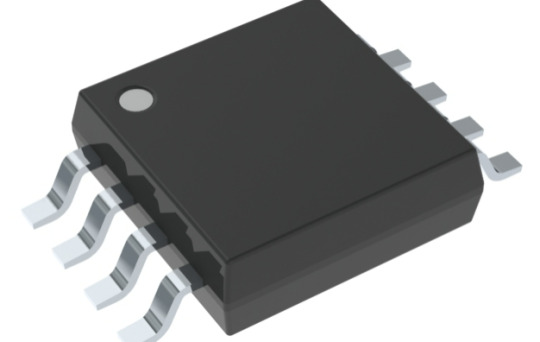
The DS18B20U+T&R is a 1-wire digital temperature sensor manufactured by Analog Devices, a leading innovator in precision measurement technologies. Unlike traditional analog sensors, the DS18B20U+T&R delivers a digital output via a 1-wire interface, making it easy to integrate into various systems without the need for complex wiring.
Get more details: DS18B20U+T&R: Features, Specs & More
#electronics#integrated circuits#semiconductor#components#electronic#module#electronic devices#chips#manufacturing#sensors
1 note
·
View note
Text
Dreame's Innovative Robot Cleaning Solutions for Smart Homes
Dreame, a leading brand in the smart home industry, is revolutionizing the way we approach household cleaning with its cutting-edge robot cleaning solutions. With a focus on convenience, efficiency, and advanced technology, Dreame's robot vacuums and mops are designed to make your life easier while ensuring a spotless living environment.
One of Dreame's flagship products is the Robot Vacuum and Mop, a versatile and intelligent cleaning companion that combines powerful suction and precise navigation to meticulously clean your floors. Equipped with advanced sensors and mapping technology, this robot cleaner can navigate your home with ease, avoiding obstacles and cleaning every nook and cranny. Its long-lasting battery ensures uninterrupted cleaning sessions, while its smart app integration allows you to schedule cleanings, monitor progress, and even control the robot remotely.
In addition to its robot vacuums, Dreame also offers a range of robot mops that effortlessly clean and sanitize your hard floors. These innovative devices use advanced cleaning technologies and intelligent navigation systems to deliver a thorough and efficient cleaning experience. With their ability to automatically detect and avoid carpets, you can rest assured that your hard floors will be spotless without risking any damage to your carpeted areas.
Dreame's commitment to innovation extends beyond just its products. The company continuously invests in research and development to stay ahead of the curve and introduce cutting-edge features that enhance the user experience. From advanced mapping and navigation capabilities to improved battery life and cleaning performance, Dreame is dedicated to providing smart home solutions that truly make a difference in your daily life.
With Dreame's robot cleaning solutions, you can enjoy a hassle-free and spotless living environment while embracing the convenience of modern technology. Say goodbye to tedious cleaning chores and hello to a smarter, more efficient way of maintaining a clean and healthy home.
#Dreame#robot cleaning#smart home#robot vacuum#robot mop#advanced technology#cleaning solutions#automation#navigation#sensors#smart app integration#efficient cleaning#innovation
0 notes
Text
:
Also this:
:

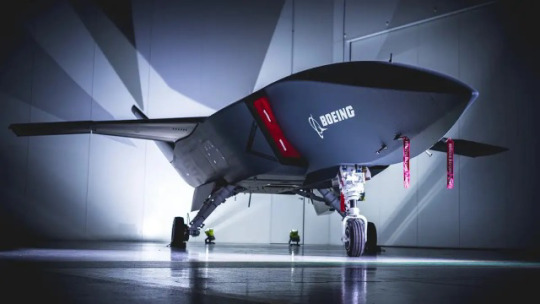
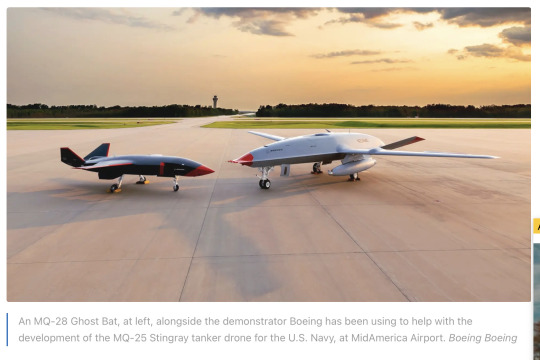


#loyal wingman#autonomous drones#autonomous#drone wars#skyborg#NGAD#sensor fusion#integrated ISR#war bots#xq-58a#mq-28a#game of drones
2 notes
·
View notes
Text

MicroThrust Processors OrC-19 Com-Scan Display
Source: The Essential Guide to Weapons and Technology (Del Rey, 1997)
#star wars#sensor technology#communications technology#rebel alliance technology#microthrust processors#orc-19 com-scan display map#orc-19 com-scan integrator console#echo base#battle of hoth#first appearance the empire strikes back#essential guide to weapons and technology#essential guides#galactic civil war
0 notes
Text
Installation of Fire Alarm Systems
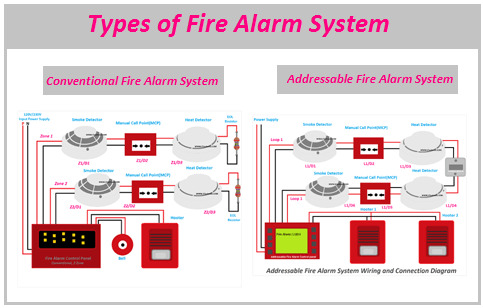
Installation of Fire Alarm Systems

مرحباً بكم في بداية جروب – خبراء في أنظمة إنذار الحريق
نحن في بداية جروب نقدم لكم خدمات متكاملة في أنظمة إنذار الحريق، مع ضمان أعلى معايير السلامة. تواصل عبر الواتساباتصل بنا الآن
1. Importance of Fire Alarm Systems
The importance of fire alarm systems is evident in several aspects:
Protection from Hazards: They alert individuals in case of a fire, providing sufficient time to evacuate the building.
Reducing Financial Losses: Early detection of fire can minimize material damage and aid in preserving property.
Compliance with Legal Requirements: In many countries, installing fire alarm systems is mandatory in public and commercial buildings.
2. Types of Fire Alarm Systems
Fire alarm systems include several types, such as:
Manual Alarm Systems: Such as manual pull stations activated by individuals during an emergency.
Automatic Alarm Systems: These rely on sensors to detect smoke or heat and automatically issue alerts.
3. Steps for Installing Fire Alarm Systems
The steps for installing fire alarm systems can be summarized as follows:
Initial Assessment: Evaluate the building and identify the most vulnerable areas.
Choosing the Appropriate System: Select the suitable type of system based on the building's needs.
Installation: Install sensors, alarms, and control panels professionally.
Testing and Confirmation: After installation, the system must be tested to ensure efficient operation.
4. Regular Maintenance
To ensure the continuous operation of the fire alarm system, regular maintenance is crucial. Maintenance includes:
Sensor Checks: Ensure their effectiveness and proper functioning.
Device Testing: Verify that all alarms operate correctly.
System Updates: Consider updating the system to keep pace with technological advancements.
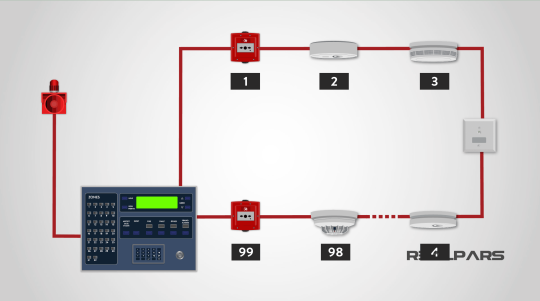
5. Choosing a Professional Installation Company
It's important to choose a reliable company for installing fire alarm systems. The company should have:
Experience: A long history in installing and maintaining alarm systems.
Licensing: Be licensed and certified by official authorities.
After-Sales Service: Provide support and maintenance services post-installation.
Installing fire alarm systems is a crucial step in protecting lives and property. The right system and professional installation ensure the system's effectiveness. Don’t hesitate to contact Bidaya Company for a free consultation and reliable installation services.
Installation of Fire Alarm Systems
Fire alarm systems are among the most important safety elements in buildings, playing a vital role in protecting lives and property. Therefore, installing these systems is a complex process requiring expertise and technical knowledge. Here are additional details about installing fire alarm systems.
مرحباً بكم في بداية جروب - خبراء في أنظمة إنذار الحريق
نحن في بداية جروب نقدم لكم خدمات متكاملة في أنظمة إنذار الحريق، مع ضمان أعلى معايير السلامة. تواصل عبر الواتساباتصل بنا الآن
1. System Design
Before starting the installation process, the fire alarm system must be designed based on several factors, such as:
Building Size: Larger buildings require more complex systems that include multiple sensors and alarms.
Building Usage: The system design varies depending on the building's purpose (residential, commercial, industrial).
Construction Materials: The materials used in the building affect how smoke and heat spread, impacting sensor installation locations.
2. Types of Sensors
Fire alarm sensors differ based on how they detect fire:
Smoke Sensors: Detect smoke particles in the air and vary between ionization and photoelectric smoke sensors.
Heat Sensors: Detect abnormal increases in temperature and include fixed and two-point sensors.
Flame Sensors: Detect flames using infrared or visible light and are effective in environments where high temperatures can cause false alarms.
3. Control Panels
Central control panels are essential components of the fire alarm system. They manage all sensors and alarms and include:
System Status Display: Shows the status of each sensor in the system, indicating whether it is in normal operation or detecting a fire.
Interaction Capabilities: Allow the user to interact with alerts and manually control the system.
Event Logging and Documentation: Some panels have event logging features, allowing for tracking and documenting any alerts that occur.
4. Safety Procedures During Installation
When installing a fire alarm system, it’s essential to adhere to several safety procedures to avoid any risks, including:
Power Shutdown: Ensure that all electrical systems are turned off during installation to avoid electrical shocks.
Using Appropriate Equipment: Utilize suitable installation tools and equipment to prevent damage to any components during installation.
Providing Adequate Ventilation: If using chemicals or adhesives, ensure proper ventilation to avoid inhaling harmful substances.

مرحباً بكم في بداية جروب - خبراء في أنظمة إنذار الحريق
نحن في بداية جروب نقدم لكم خدمات متكاملة في أنظمة إنذار الحريق، مع ضمان أعلى معايير السلامة. تواصل عبر الواتساباتصل بنا الآن
5. Training and Awareness
After installing the fire alarm system, training for workers or residents in the building on how to use the system is vital. Training includes:
Recognizing Fire Alarms: Clarifying how to recognize alarm signals and the importance of rapid response.
Evacuation Plans: Explaining the evacuation plan in case of fire, including safe routes and designated meeting areas.
6. Modern Technologies in Fire Alarm Systems
Modern technologies used in fire alarm systems include:
Integration with Other Security Systems: Such as surveillance and cameras, providing an additional level of security.
Alerts via Smartphones: Sending instant alerts to mobile devices in case of fire, allowing for quick action.
Artificial Intelligence Systems: Using AI to analyze data for detecting patterns and potential threats.
Installing fire alarm systems requires technical knowledge and high expertise to ensure their effective operation. It is essential to choose a reliable company like Bidaya Company to ensure the installation of a comprehensive system that complies with international safety standards and achieves maximum security.
Installation of Fire Alarm Systems
The installation of fire alarm systems is a vital step in enhancing safety within any building. These systems require careful planning and a deep understanding of the available technologies. In this context, we will delve into more details about installing fire alarm systems, along with keywords that enhance the article’s visibility in search engines.
1. Preliminary Planning for System Design
Before commencing the installation process, specialists should conduct a comprehensive site assessment. This includes:
Studying the Building Layout: Analyzing the layout to identify the most critical points for sensor installation, such as hallways, rooms, and enclosed spaces.
Identifying Hazard Sources: Pinpointing potential fire outbreak locations, such as kitchens and storage areas, to ensure nearby sensors are installed.

2. Modern Detection Technologies
Modern technologies used in fire alarm systems employ advanced methods to improve detection accuracy, including:
Advanced Sensors: Such as smart sensors capable of distinguishing between smoke from a fire and smoke from cooking.
Nano Technology: Utilizing it to develop lightweight and compact sensors that enhance system effectiveness.
مرحباً بكم في بداية جروب - خبراء في أنظمة إنذار الحريق
نحن في بداية جروب نقدم لكم خدمات متكاملة في أنظمة إنذار الحريق، مع ضمان أعلى معايير السلامة. تواصل عبر الواتساباتصل بنا الآن
3. Integration with Other Security Systems
Integrating fire alarm systems with other security systems in the facility provides an additional level of protection:
Automatic Fire Suppression Systems: Can work in tandem with alarms to extinguish fire in its early stages.
Audible Alarm Systems: Alert people inside the building to evacuate and can be connected to a public address system.
4. Installation Guidelines
When installing fire alarm systems, a set of guidelines must be followed to ensure efficient installation:
Avoid Interference: Sensors should be installed away from excessive heat sources, such as electric bulbs.
Consider Heights: Determine the appropriate height for sensor installation based on their type. For example, smoke sensors should be installed 30-60 cm from the ceiling.
Correct Orientation: Position sensors effectively toward areas where smoke accumulates.
5. Performance Testing
After installation, comprehensive performance tests should be conducted to verify the system’s effectiveness:
Simulation Tests: Simulate fire scenarios using artificial smoke to ensure the system responds appropriately.
Performance Evaluation: Measure the sensors’ response time and accuracy in detecting fire locations.
6. Periodic Maintenance Strategies
Fire alarm systems require regular maintenance to ensure ongoing efficiency:
Schedule Inspections: Develop a plan to inspect systems periodically, at least once every six months.
System Updates: Consider updating the system in line with the latest available technologies.

Keywords
Installation of fire alarm systems
Fire protection
Automatic alarm systems
Smoke sensors
Fire system maintenance
Fire detection technologies
Integrated security systems
Importance of alarm systems
Fire system performance testing
Design of fire alarm systems
The installation of fire alarm systems requires dedication and high technical knowledge. Ensure to choose a professional company like Bidaya Company to guarantee an effective system installation that achieves the highest safety standards. If you have any inquiries or need consultation, please do not hesitate to contact us!
#Installation of fire alarm systems#Fire protection#Automatic alarm systems#Smoke sensors#Fire system maintenance#Fire detection technologies#Integrated security systems#Importance of alarm systems#Fire system performance testing#Design of fire alarm systems
0 notes



